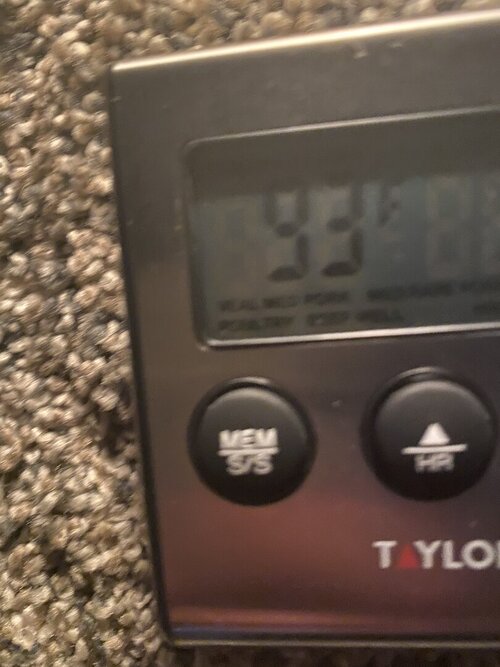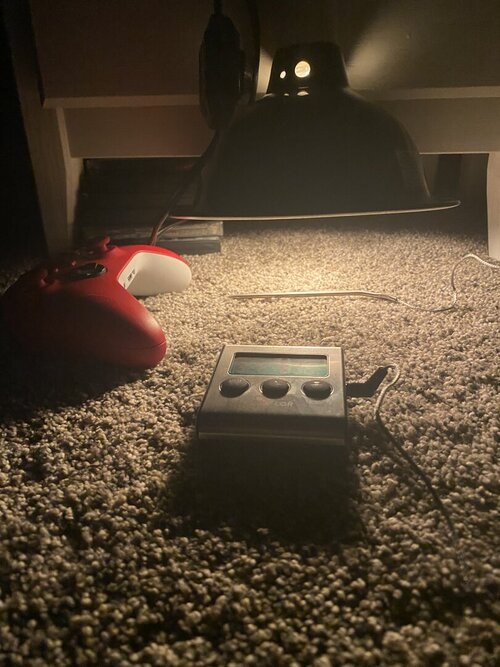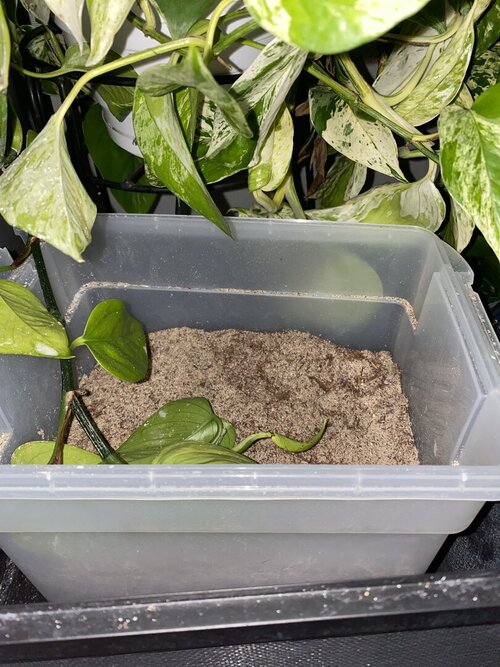Evensen0316
Member
I will start to get some distilled water! My fogger is no longer in my enclosure. It’s now in a corner of my room so I’m hoping I can still use tap water their and use distilled in the enclosure? Also my basking light fixture has a dim mode so this morning I was trying to find a good temp. My basking area is a bit further than the distance I have my probe in this pic. So basking temp shouldn’t get higher than 95° now. I marked on my dial to only turn the light up this much now.









